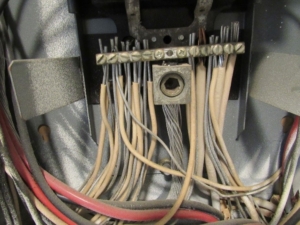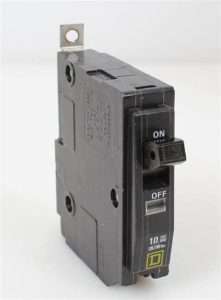The Risks, Insurance Implications, and Repair Expenses of Cloth Wiring
What is Cloth Wiring?
Cloth-covered wires, also known as fabric-covered wires, are a popular choice for home and office decor. If you live in or are considering buying a home with cloth wiring it is important to be aware of the potential hazards, insurance implications, and repair costs associated with these wires.
In this article, we will discuss the risks of using cloth-covered wires and how they may affect your insurance coverage. We will also explore the cost of repairing or replacing these wires if they become damaged. Understanding these factors can help you make an informed decision about using cloth-covered wires in your home or office.
Types of Cloth Wiring
Braid cloth wires and NM (non-metallic) cloth wires are both types of cloth-covered wires, but they have some differences in their construction and usage.
Braid cloth wires, also known as fabric-covered BX wires, are made by braiding a cloth or fabric material around a metal conductor. They are typically used in older buildings and are often found in vintage or antique lighting fixtures. These wires are not UL (Underwriters Laboratories) listed and considered not safe to use.UL-listed (Underwriters Laboratories Listed) is a certification mark that indicates that a product has been tested and meets safety standards established by Underwriters Laboratories (UL). UL is an independent, non-profit organization that tests and certifies products to ensure they meet safety standards.
When a product is UL-listed, it means that it has been evaluated by UL and found to comply with the safety standards established for that particular product category. This process includes testing the product in a laboratory and ongoing follow-up inspections to ensure the product continues to meet the requirements.UL-listed products are used in a wide range of industries, including electrical, building, and home construction, and are recognized by authorities having jurisdiction such as building code officials, fire departments, and insurance companies.
NM cloth wires, also known as Romex, are made by covering a plastic or rubber insulated cloth wiring. They are more commonly used in new construction and are UL-listed, meaning that they have been tested and certified to meet safety standards. They are typically used for residential wiring and are less prone to fire hazards than BX wires.
Dangers of Cloth Wiring
- Age: Cloth-covered wires were commonly used in construction during the early to mid-20th century, specifically between the 1920s and 1960s. As these wires age, the insulation around the wires can degrade, making them more prone to electrical fires.
- Fraying: Cloth-covered wires can become frayed over time, exposing the metal conductor inside. This can cause a short circuit, leading to an electrical fire.
- Insulation: The insulation used in cloth-covered wires is not as heat resistant as the insulation used in modern wires. This can cause the insulation to melt or catch fire if the wire overheats.
- Lack of Safety Standards: Cloth-covered wires were not subjected to the same safety standards as the wires used today. So, it may not be able to withstand the current electrical loads and cause a fire hazard.
Getting Homeowners Insurance with Cloth Wires
It is possible to get homeowners insurance with cloth wiring, but it may be more difficult and may come with certain limitations or exclusions. Homeowners insurance companies consider cloth wiring to be a potential fire hazard, and they may require that the wiring be replaced before they will provide coverage. Some insurance companies may even refuse to insure a home that has cloth wiring.
If you do manage to get homeowners insurance with cloth wiring, it’s likely that the insurance company will include a rider or endorsement stating that they will not cover any losses caused by electrical fires resulting from the cloth wiring.It’s important to note that it’s the responsibility of the homeowner to disclose the presence of cloth wiring to their insurance company. Failure to disclose this information may lead to a denied claim in case of an accident.
It’s recommended to have a licensed electrician inspect your wiring to check if it meets current safety standards. If it does not, it’s important to have it replaced.
Cost to Repair or Replace Cloth Wires
The cost of repairing or removing cloth wiring can vary depending on a number of factors, such as the extent of the damage, the location of the wiring, and the cost of labor in your area. On average, the cost of repairing cloth wiring can range from $200 to $1000. This cost can increase if the repair requires removing walls, ceilings, or other structures to access the wiring.
Removing cloth wiring and replacing it with newer, safer wiring can be more expensive, with an average cost of $3000 to $5000. This cost can increase if the wiring removal requires extensive work such as removing walls, ceilings, or other structures. It’s important to note that these are just averages and the actual cost will depend on many factors. It’s recommended to get a quote from a licensed electrician in your area to get a more accurate estimate of the cost.
Consider the long-term safety and peace of mind that comes with updated wiring, which can outweigh the short-term cost of repairs or removal. If you have additional questions and want to get in contact with GGR Home Inspections please send us a note, text, or call.






Pingback: Differences Between GFCI Receptacle and GFCI Circuit Breaker? (2023 Guide) - GGR Home Inspections
Pingback: Do You Need A Home Inspection? November 2021 - GGR Home Inspections
Pingback: Outlet Testers Are Not Always Correct – GGR Home Inspections